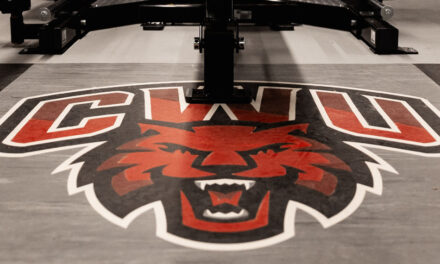Once you’ve secured a sponsorship, the next step is to illustrate the value that sponsors are receiving. Keeping sponsors informed and satisfied with their investment is crucial for maintaining long-term partnerships. This installment in our series on sponsorships will cover how to effectively gather, document, and report statistics to sponsors throughout the year.
Key Metrics to Gather
Sponsorships are investments, and sponsors expect measurable returns. To ensure they understand the value in continuing their support, regularly gather and present data that demonstrates the exposure and engagement of their brand. Here are some metrics to keep track of:
Event Statistics
Gather detailed data on every event where sponsors have visibility. Such as:
- Attendance: Keep track of how many people attend each game, match, or event.
- Number of Events: Record the total number of games or events where the sponsor’s branding was present (e.g., 10 home games in a football season).
- Duration of Exposure: For each event, document the total length of time the sponsor’s logo or message was visible (e.g., on a scoreboard, during livestream broadcasts, on team jerseys).
Digital and Social Media Engagement
In today’s world, digital presence is just as important as physical exposure. Track and report the following:
- Livestream Viewership: If your games are streamed online, track how many viewers tuned in live and how many people watch the recorded stream afterward. Many livestream platforms offer built-in analytics tools that can help you report these numbers.
- Social Media Reach: Monitor engagements with social media posts mentioning the sponsor. This includes likes, shares, comments, and total impressions.
- Website Traffic: If your sponsor’s logo appears on the school’s athletic website, provide data on how much traffic the site receives and how many clicks their site received.
- Email Newsletter Open Rates: If your athletic program sends newsletters, track how many people opened and engaged with the content that included the sponsor.
Sponsorship Activity
Beyond passive branding, some sponsors engage directly with your audience through booths, contests, or giveaways. Be sure to document:
- Number of Interactions: Report how many people visited the sponsor’s booth, participated in their contests, or received promotional materials during an event.
- Giveaway Participation: If the sponsor held a raffle or giveaway, report how many entries were collected and how many people were reached through promotional emails or social media campaigns.
Establishing a Strong Line of Communication with Sponsors
Once you’ve gathered relevant data, it’s crucial to share this information regularly with your sponsors. Providing them with consistent reports not only demonstrates the value of their investment but also keeps them engaged in your athletic program. Here’s how to build a solid communication plan:
Reporting Schedule
Athletic directors should establish a routine for reporting sponsorship statistics. This ensures transparency and keeps sponsors informed on how their investment is performing. A recommended approach is to report three times a year, aligned with the major sports seasons:
- Fall Report: Cover sports like football, soccer, and volleyball. Provide attendance figures, digital engagement data, and any special event results.
- Winter Report: Focus on basketball, wrestling, and indoor sports. Include statistics on attendance, livestream viewers, and digital/social media presence.
- Spring Report: Highlight baseball, track, and spring sports, along with season-end statistics.
These reports can be sent at the end of each season, ensuring sponsors receive timely updates on their visibility and impact. Use this as an opportunity to ask about renewing their sponsorship for the following season. Sponsors are most likely to renew their contracts if they’re approached at the height of the season’s success or immediately following key reports that show strong ROI.
Annual Summary Report
In addition to seasonal updates, an annual report is an excellent tool to show the overall impact of the sponsorship throughout the year. This document should provide a comprehensive overview of:
- Total Audience Reach: Combine all attendance, livestream, and digital data to show the full scope of the audience that interacted with the sponsor’s brand.
- High-Impact Events: Highlight key events (e.g., championships, homecoming games) that drew especially large crowds or engaged the community at a higher level.
- Year-Over-Year Growth: If your school’s audience grew over the year (increased attendance, more social media followers, etc.), highlight that growth to show sponsors the expanding value of their investment.
- Sponsor Highlights: Mention any special contributions or activities the sponsor was involved in, such as hosting a giveaway or providing in-kind services.
An annual report provides sponsors with a big-picture look at their partnership and reinforces the ongoing value of supporting your athletic programs. For long-term sponsors, use this annual report to demonstrate the cumulative impact of their investment.
Renewals and Multi-Year Sponsorships
For many athletic directors, securing multi-year sponsorships is the ultimate goal. These partnerships provide financial stability and build strong, ongoing relationships with businesses. In your communication, offer suggestions on how the sponsor could increase their engagement in the coming year. This could include:
- Offer Discounts for Multi-Year Deals: Consider offering a discount (e.g., 5-10%) for sponsors who commit to multiple years of support. This not only secures funding for future seasons but also saves the sponsor money in the long run.
- Customize Multi-Year Benefits: Include exclusive benefits for multi-year sponsors, such as first rights to prime advertising spaces (e.g., scoreboards, jersey logos), or offering them priority access to new sponsorship opportunities that arise.
- Expanding Digital Presence: Encourage the sponsor to participate in more social media campaigns or livestream sponsorships.
- Higher-Level Sponsorship Packages: If they sponsored at the bronze or silver level, offer them the opportunity to upgrade to a gold or platinum package for even greater visibility.
Maintaining strong communication with your sponsors through detailed, data-driven reports is the key to long-lasting sponsorships. By tracking and documenting the impact of advertisements, athletic directors can provide sponsors with valuable insights into their brand’s exposure and engagement. Regular reports and well-timed renewal requests will help strengthen relationships, ensure sponsor satisfaction, and build a reliable funding stream for your athletic programs. When sponsors see the clear value in their investment, they’re far more likely to renew—or even upgrade—their sponsorships year after year.










